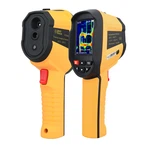How to convert LEL%, VOL% and ppm in gas detectors
When using gas detectors in daily life, the detection range on the LCD label of the gas detector often appears with words such as 0-100LEL% or 0-2000ppm, or VOL% or ppm. What do these three units specifically mean and how are they converted?
VOL% (gas volume percentage)
VOL is a physical unit that describes the volume of a gas, expressed as a percentage, which is the percentage of the volume of a specific gas in air. For example, 5% VOL methane represents that the volume of methane in the air is 5%.
The detection range of gas detectors is often expressed in terms of VOL%, for example, the detection range is 0-100% VOL, which means that this gas detector can detect the proportion range of a certain gas in the air from 0-100%.
We can also set a certain percentage value of VOL as the alarm point, and when the content of a certain gas reaches or exceeds this set value, the gas detector will sound an alarm. This involves another unit, LEL%.
LEL% (lower explosive limit)
Combustible gas is a pre mixed gas that can be uniformly mixed with air (or oxygen) within a certain concentration range. When it encounters a fire source, it will explode. The lowest volume percentage concentration of this combustible gas that can ignite in air, that is, the lower explosive limit concentration of the gas, is LEL%, abbreviated as "lower explosive limit". The concentration of gas volume at the lower explosive limit is expressed in LEL%, with the unit being a percentage, that is, the lower explosive limit is divided into one hundred parts, with one unit being 1LEL%.
PPM (parts per million of gas volume percentage)
The concept of PPM is similar to VOL, except that PPM represents one millionth of the gas volume.
For example, 10ppm carbon dioxide refers to the presence of 10 parts per million of carbon dioxide in the air, as PPM units are dimensionless.






